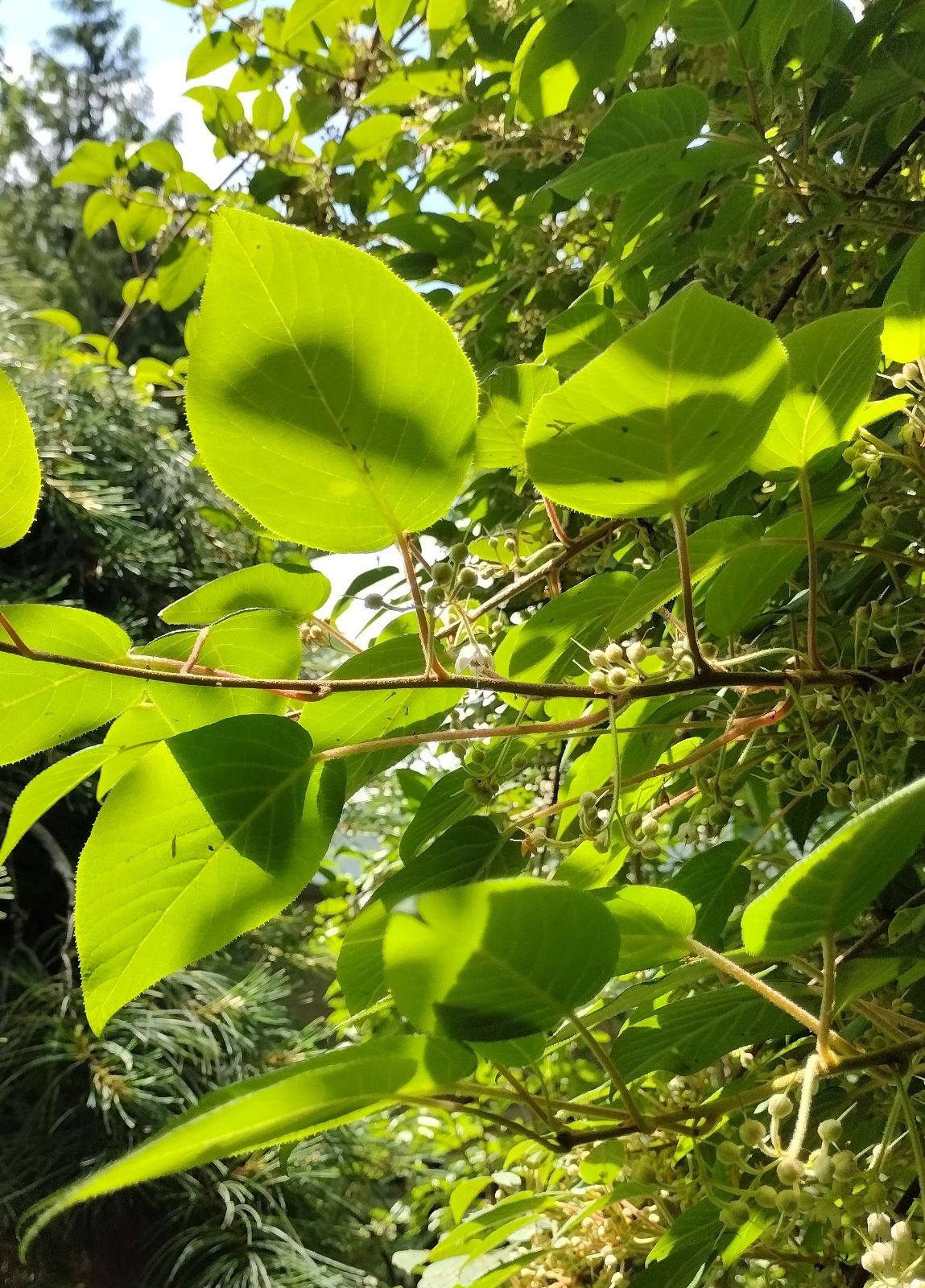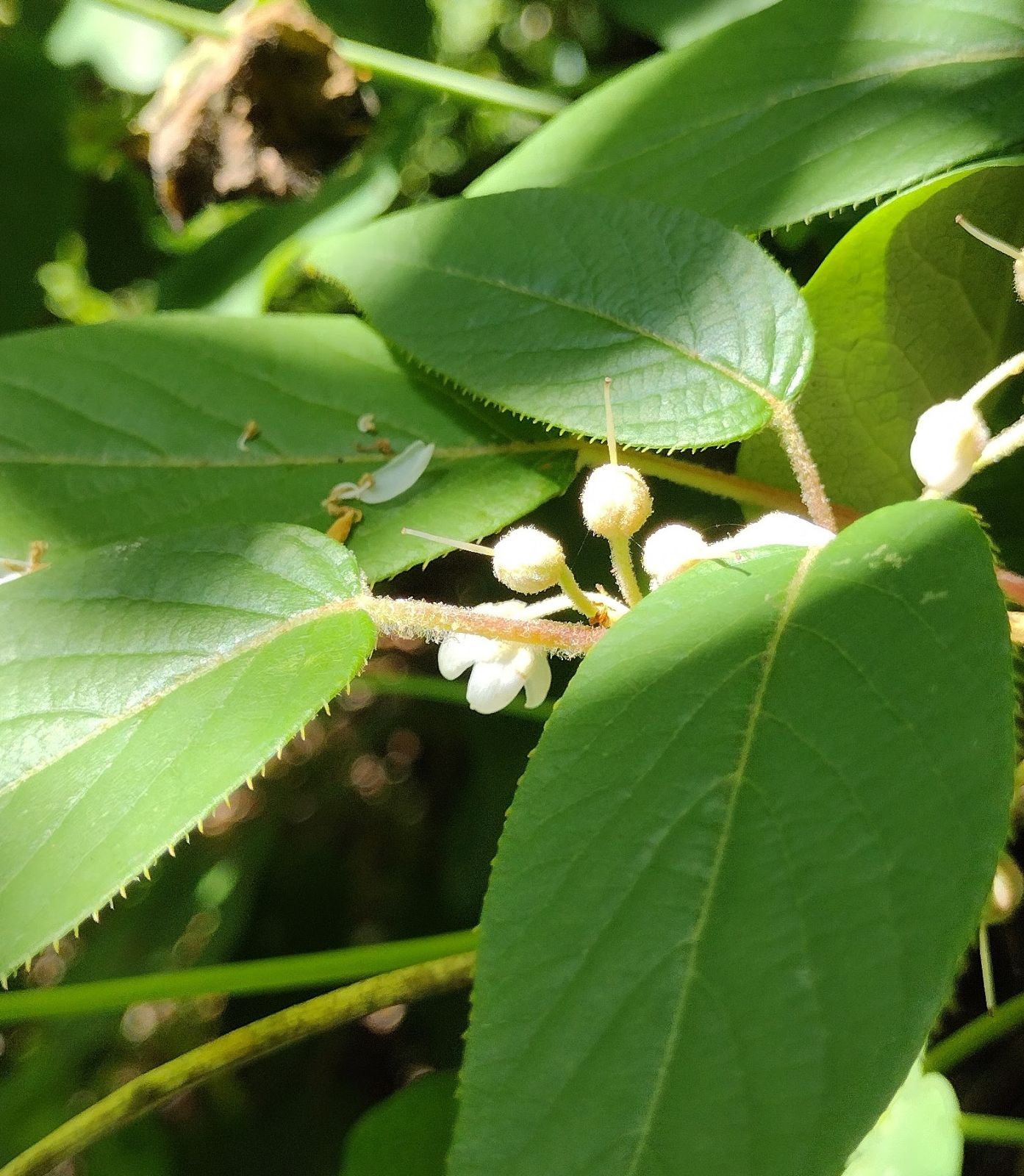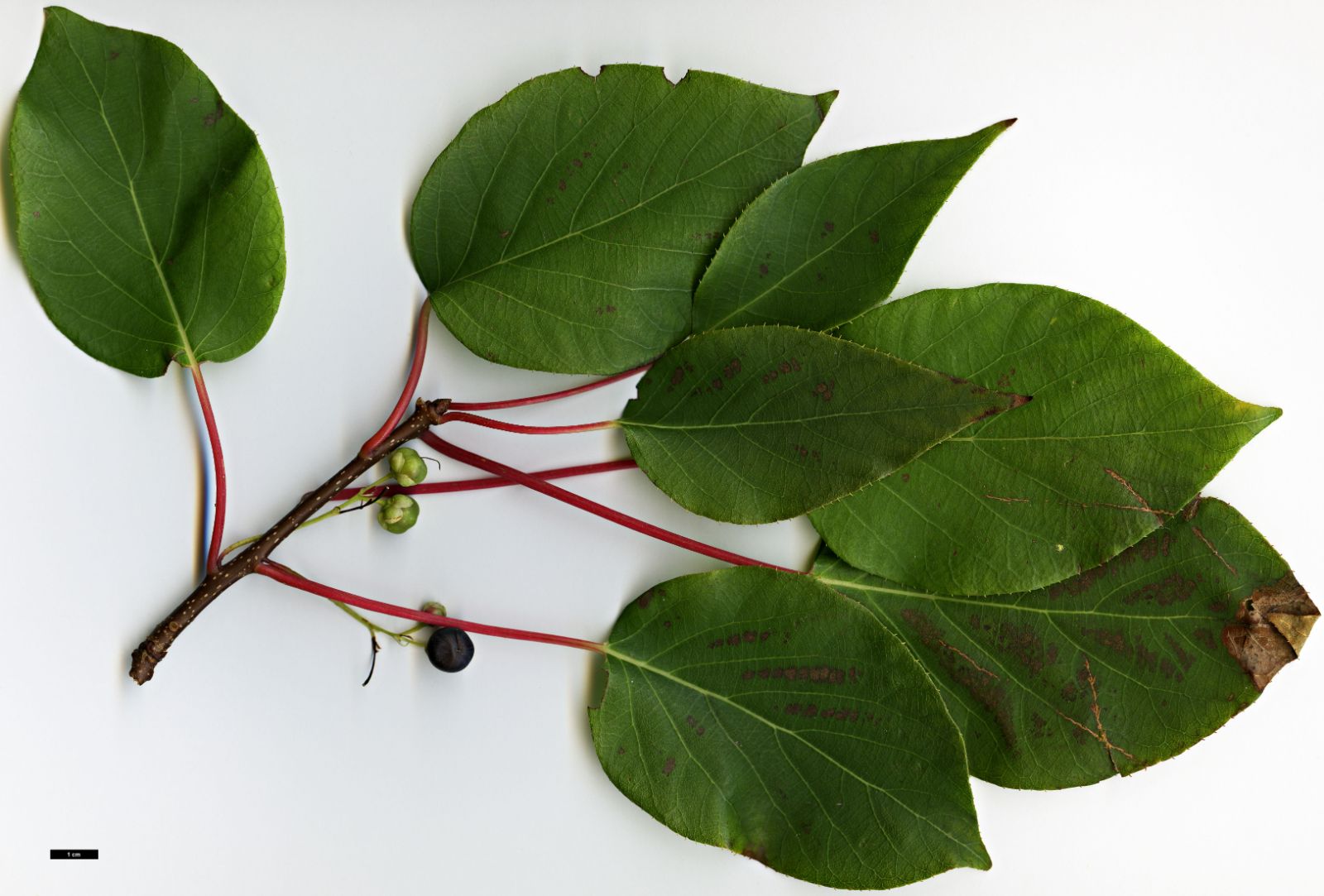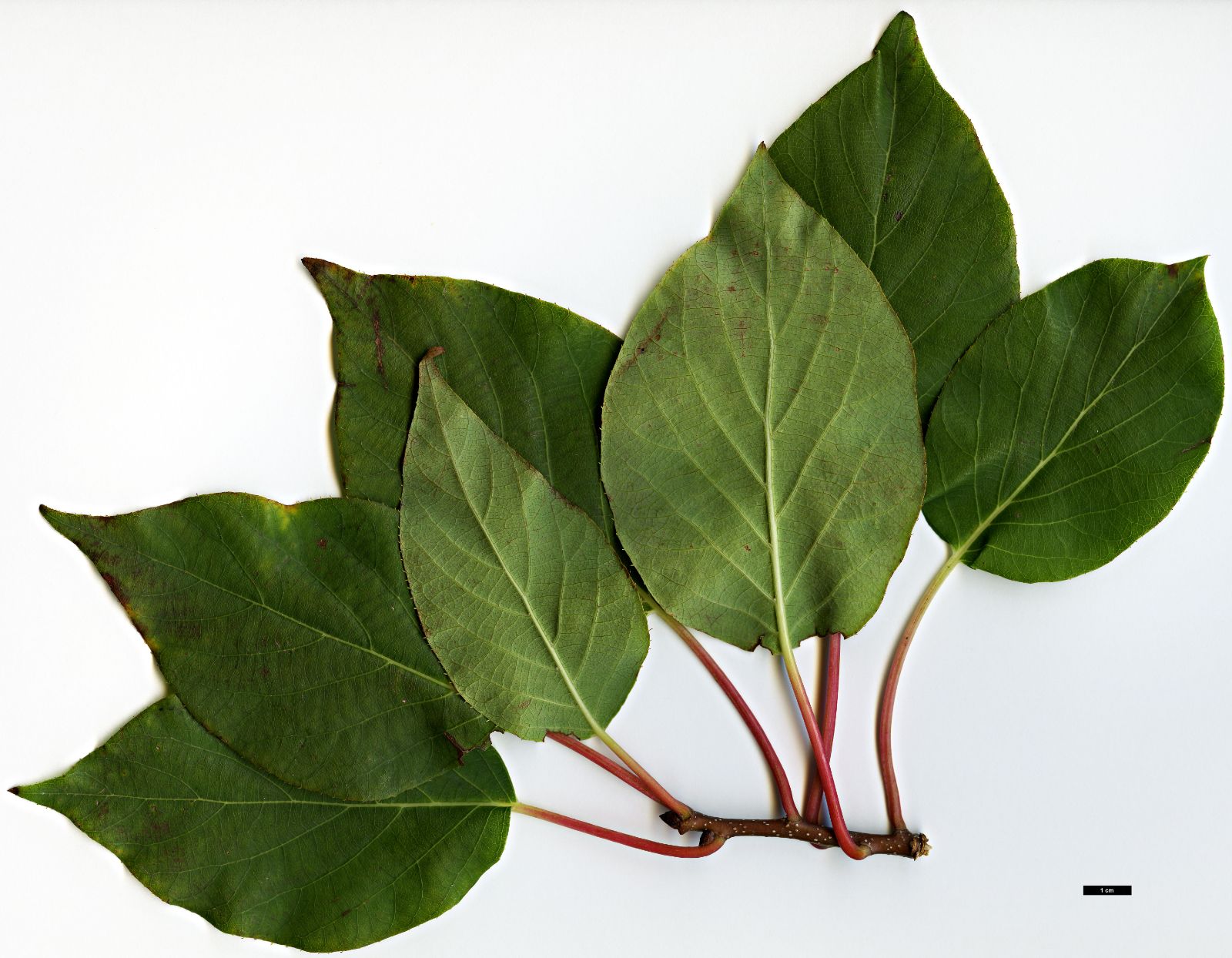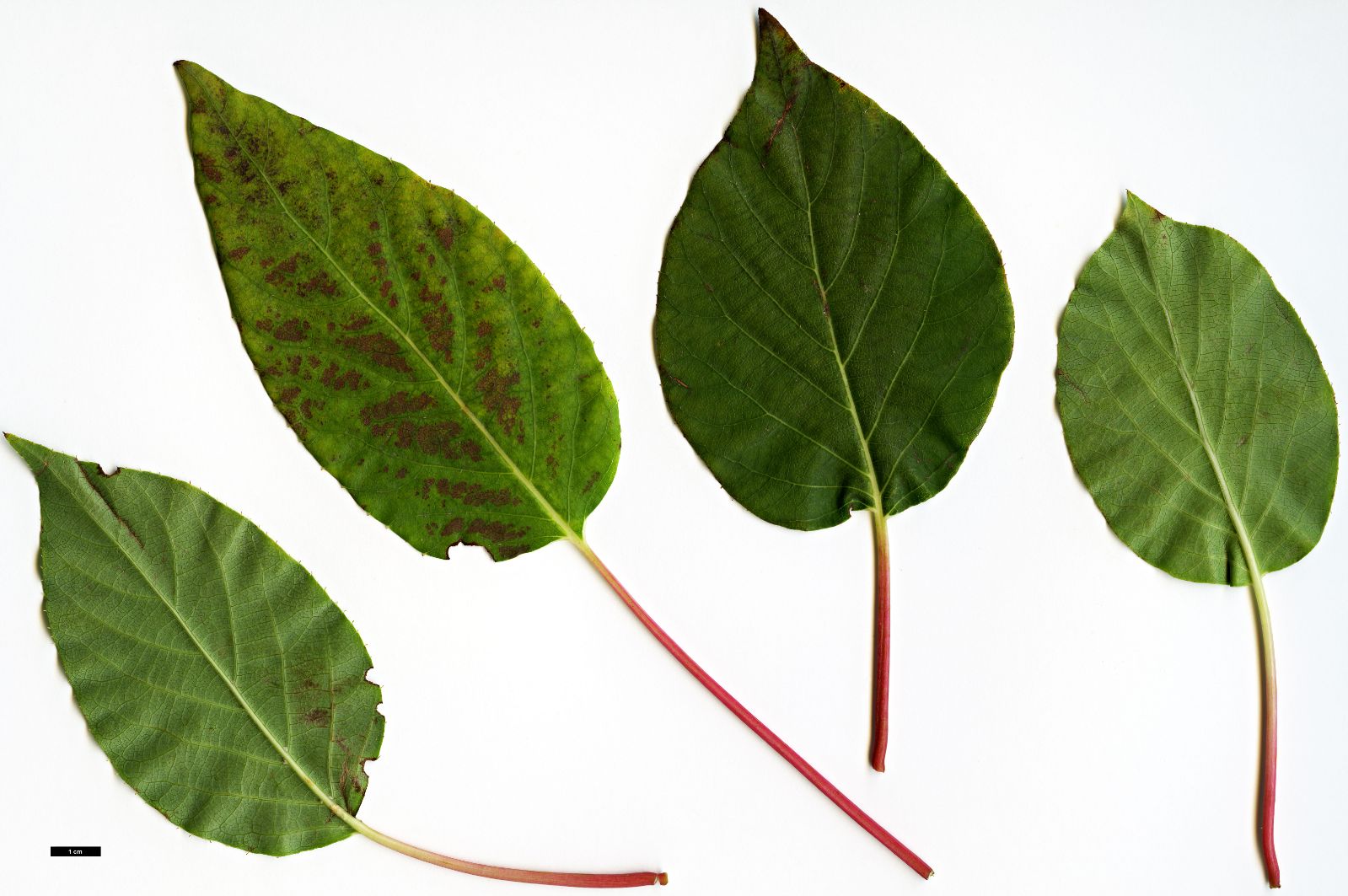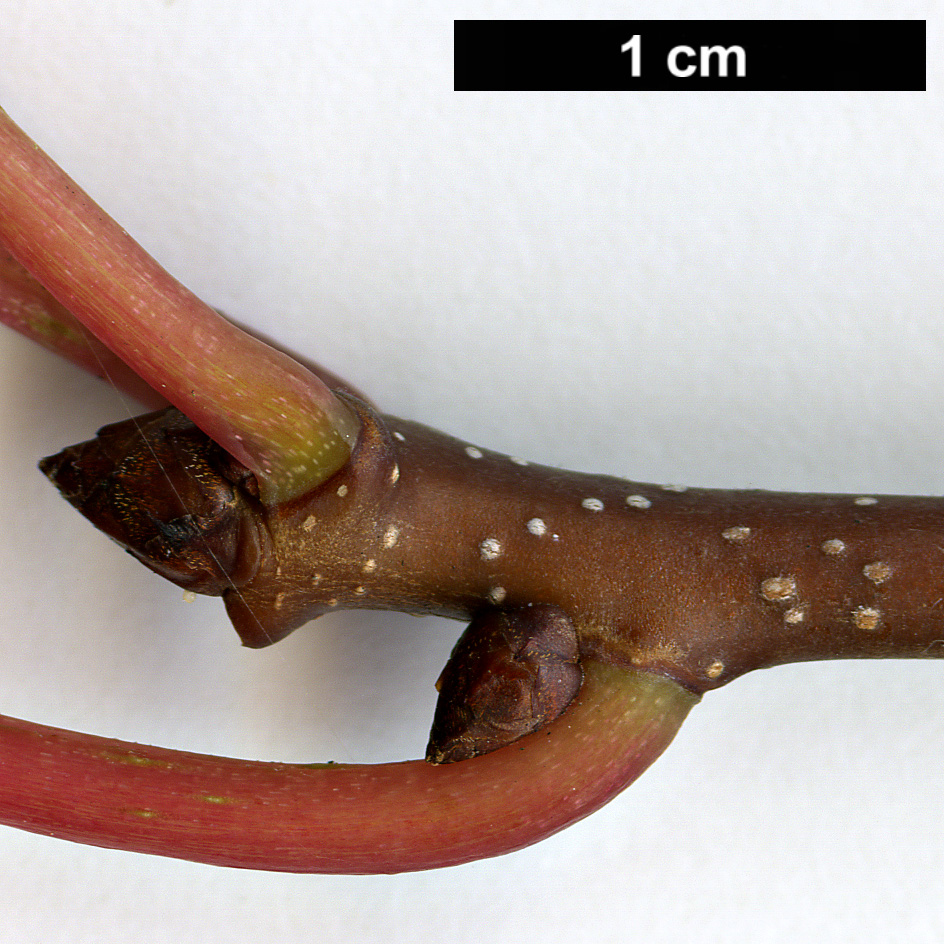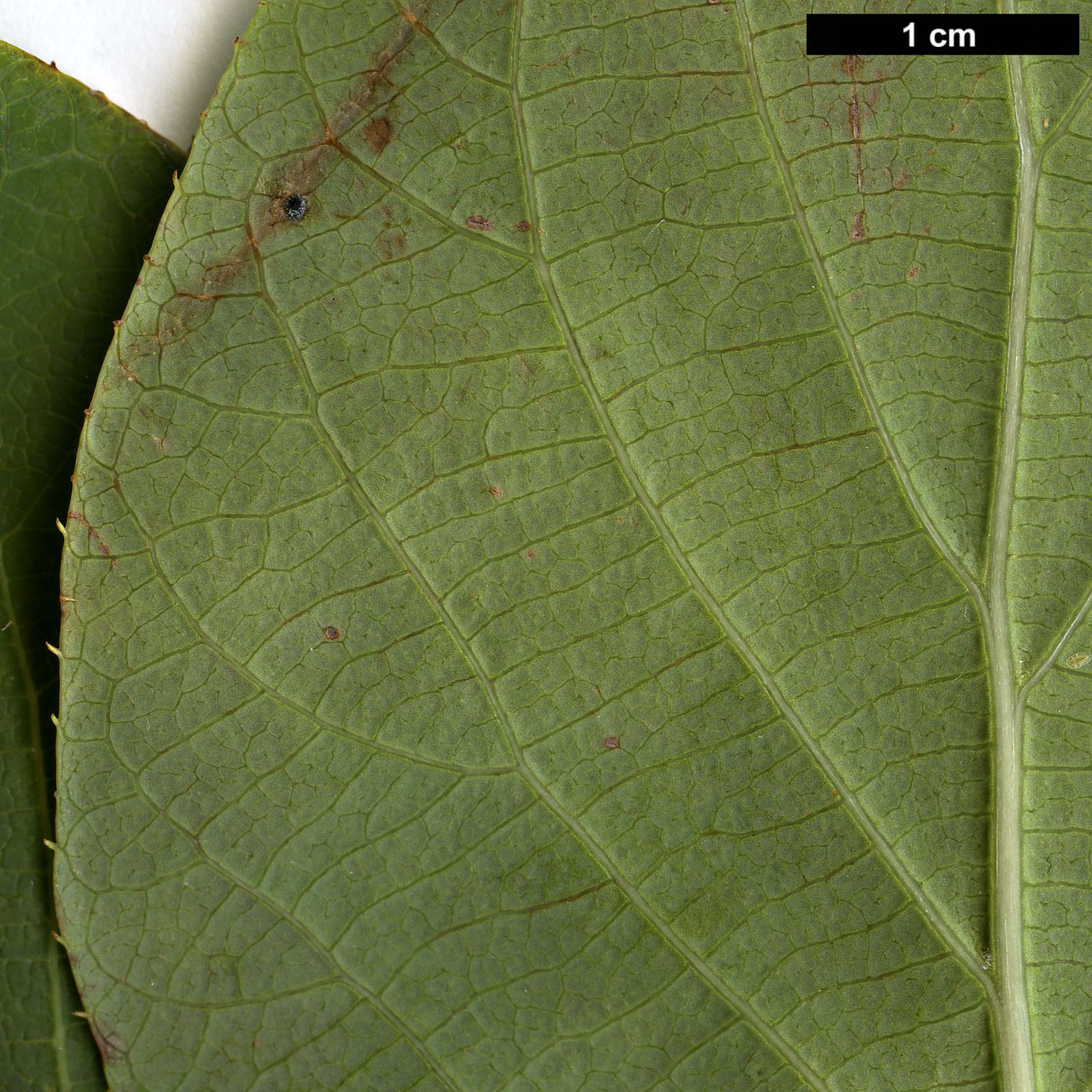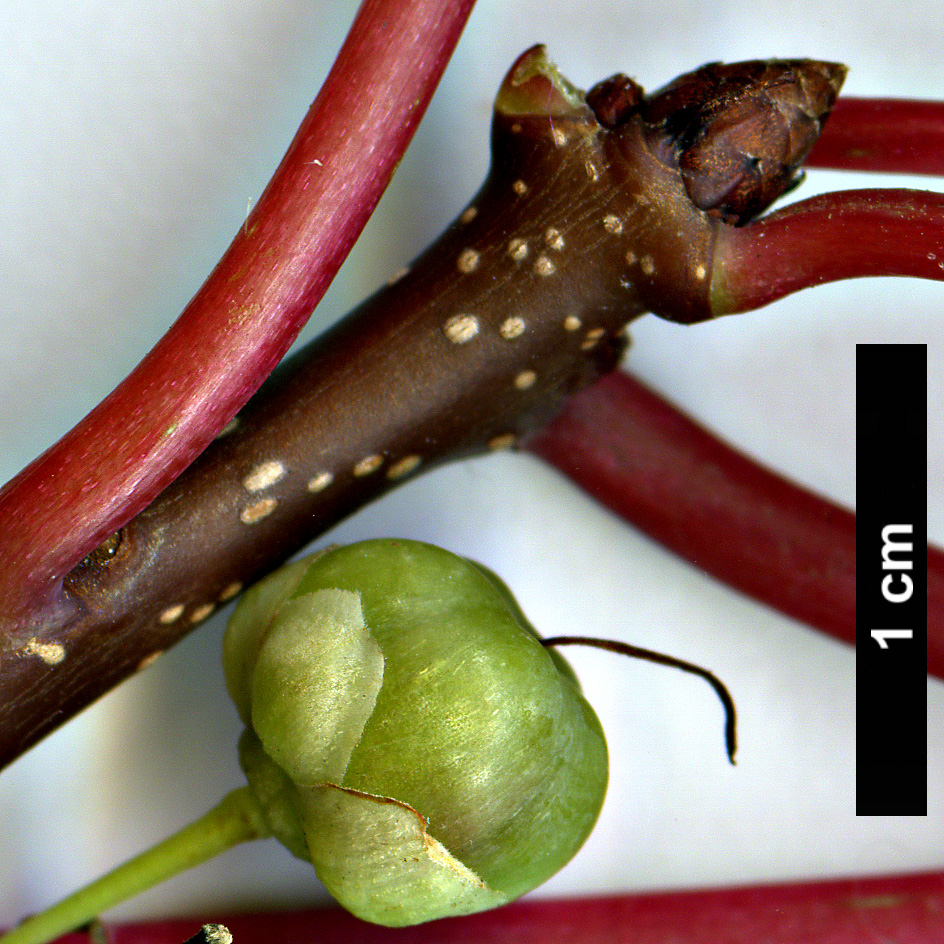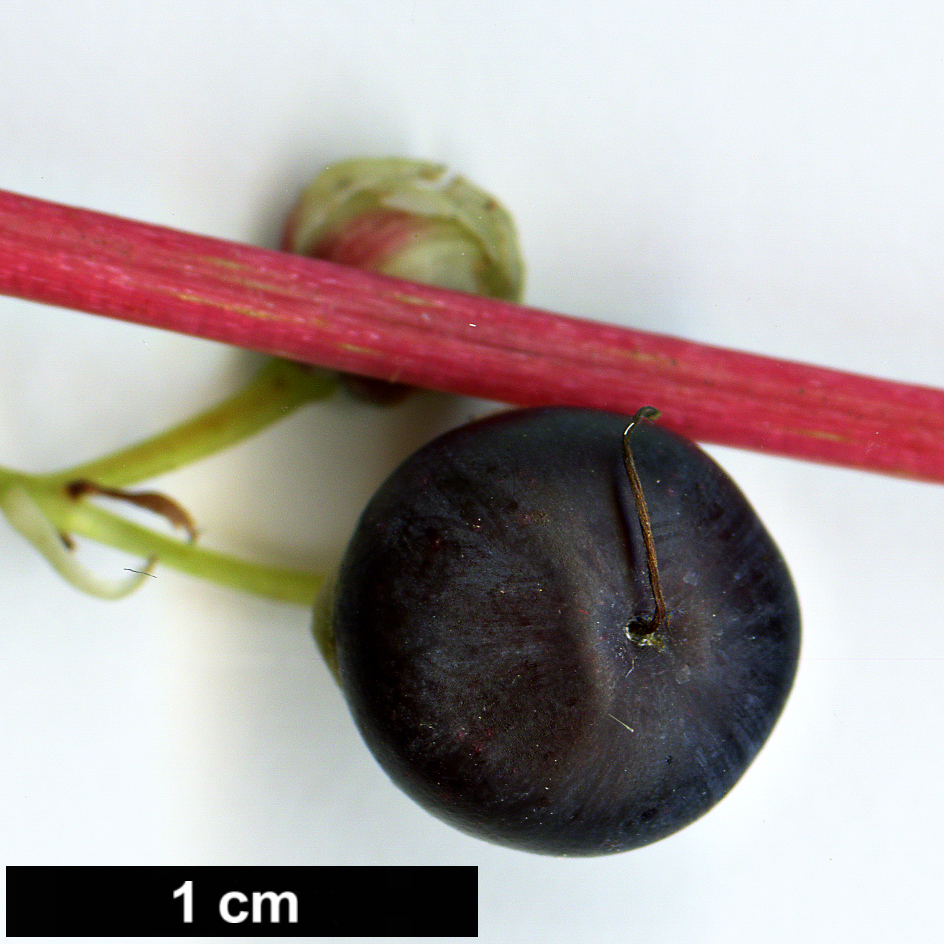Clematoclethra scandens
Credits
Article from Bean's Trees and Shrubs Hardy in the British Isles
Recommended citation
'Clematoclethra scandens' from the website Trees and Shrubs Online (treesandshrubsonline.
Genus
Synonyms
- Clethra scandens Franch.
A climbing shrub which Wilson found up to 26 ft high, the younger shoots usually covered with a thick covering of brown bristles. Leaves oblong-lanceolate to ovate-lanceolate, pointed, rounded or tapered at the base, the margin thinly bristle-toothed; varying in size from 2 in. long by 1 in. wide to 5 in. long by 23⁄4 in. wide; bristly on the midrib above and beneath, also glaucous and downy beneath; stalk up to 11⁄4 in. long, bristly like the young wood. Flowers produced in June in the leaf-axils three to six together in short slender-stalked cymes; white, 1⁄3 in. wide, with five rounded oblong petals and five shorter ciliate sepals. Fruit a red, globose berry 1⁄3 in. wide, the calyx persisting at the base.
Native of W. China; introduced in 1908. This climber is hardy at Kew on a wall or sheltered by bushes. It was originally called “Clethra scandens” by Franchet in 1887 – a strange aberration. To indicate its distinctness from clethras as previously known, he made for it a new section in the genus called Clematoclethra. This sectional name was afterwards adopted as the generic one by Maximowicz. It has of course no botanical relationship with either Clethra or Clematis.
subsp. actinidioides (Maxim.) Y.C.Tang & Q.Y.Xiang
Synonyms
Clematoclethra actinidioides Maxim.
Bean described this taxon as Clematoclethra actinidioides. His text is placed here undedited [JMG October 2023].
A climber up to 40 ft or more high; young shoots glabrous. Leaves ovate to ovate-lanceolate, sometimes inclined to obovate, acuminate, rounded to cordate at the base, finely bristle-toothed; stalk 1 to 2 in. long, slender. Flowers 3⁄8 in. wide, axillary, solitary, in pairs, or in threes on stalks 1⁄2 to 3⁄4 in. long; petals rounded, white faintly flushed with rose; sepals ciliate, broadly ovate to obovate or roundish. Fruit a nearly globose, black or purplish black berry, 1⁄4 in. wide, seated on the calyx. Bot. Mag., t. 9439.
Native of China, mainly in the provinces of Szechwan and Kansu; introduced in 1908. It was successfully grown and flowered by the late Lord Wakehurst in his garden near Ardingly in Sussex.
C. integrifolia Maxim. Introduced by Wilson from W. China in 1908, this is very near C. actinidioides and has, in fact, been made synonymous with it in the Botanical Magazine. The leaves are glabrous and glaucous beneath. It climbs 20 to 25 ft high, the flowers white and fragrant. Discovered by Potanin, the Russian traveller, in Kansu, in 1887. The name integrifolia does not entirely fit the plants now attributed to the species, for they have finely bristle-toothed leaves.
C. lasioclada Maxim. has downy, not bristly, young shoots. The leaves are ovate, 2 to 4 in. long, bristle-toothed, and have tufts of down in the vein-axils beneath; stalks up to 21⁄2 in. long. Flowers white, in cymes of two to seven blossoms. Fruit globose, 1⁄3 in. wide, black. This is a climber 20 to 25 ft high according to Wilson, who introduced it from W. China in 1908.
From the Supplement (Vol. V)
It was stated in the original printing of the current edition that this species was grown by Lord Wakehurst in his garden near Ardingly. In fact it still grows there, at Wakehurst Place, now an extension of the Royal Botanic Gardens at Kew. It also does well at Rowallane in Co. Down.

